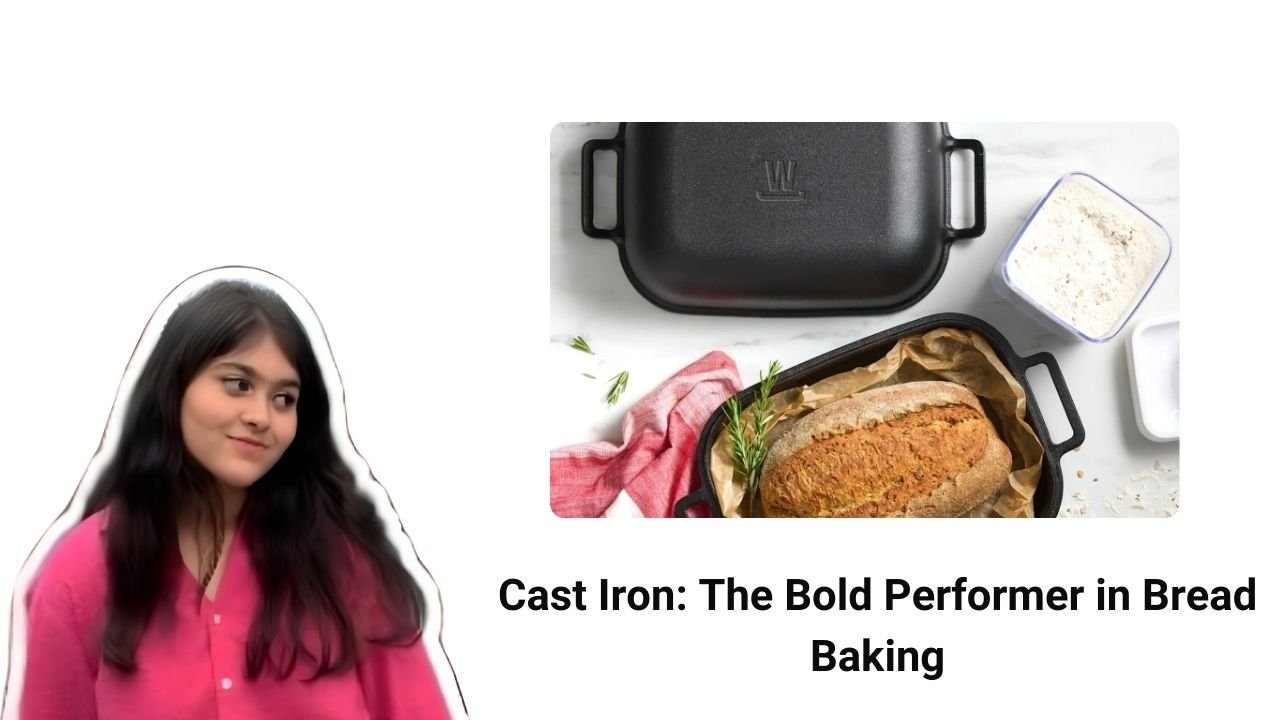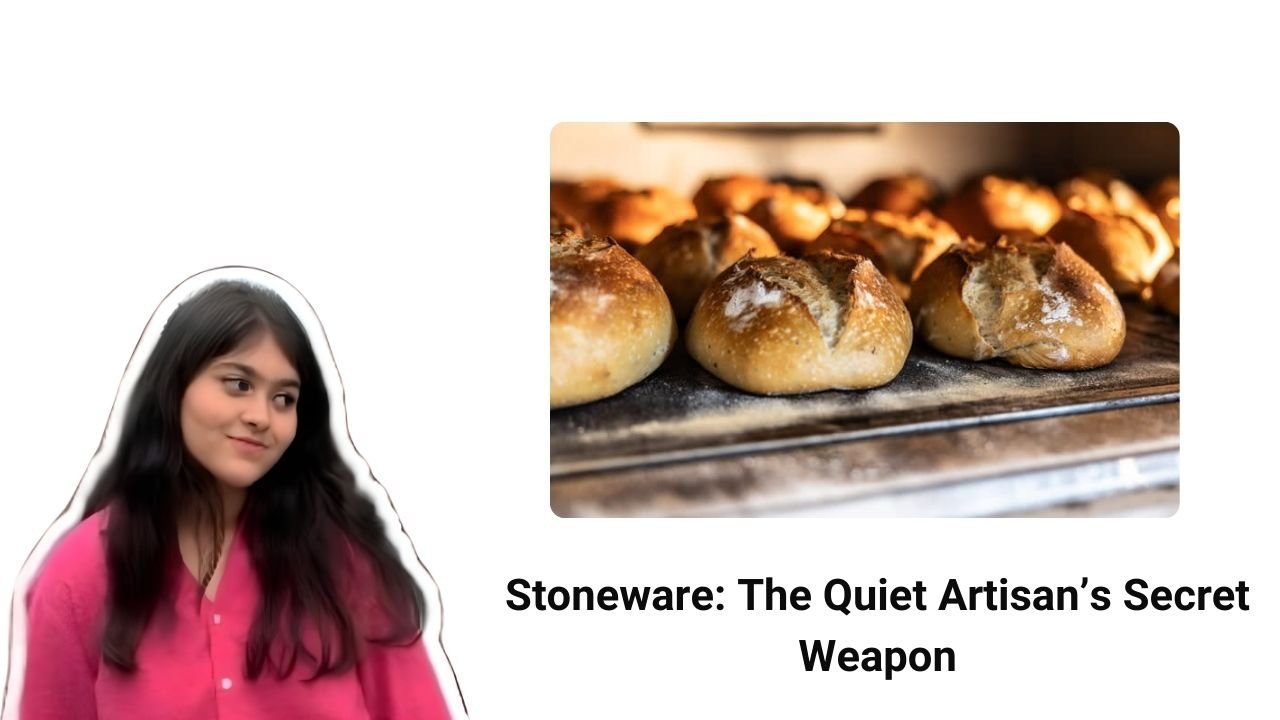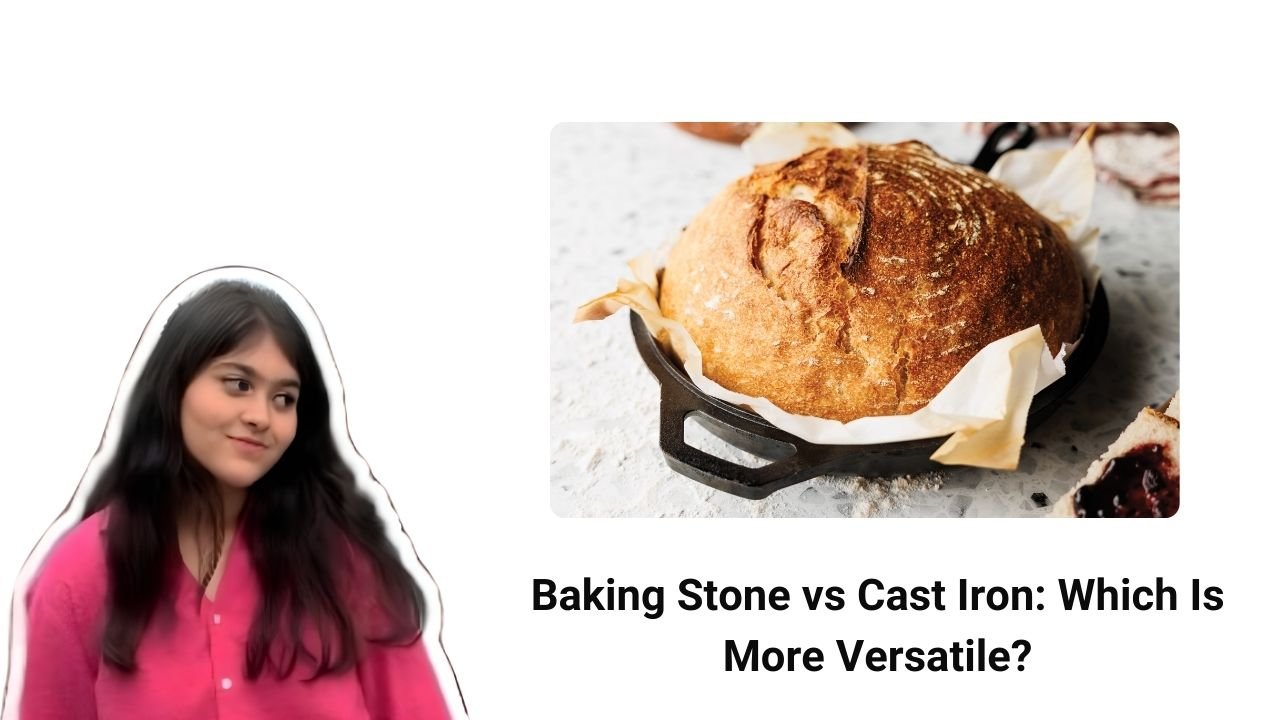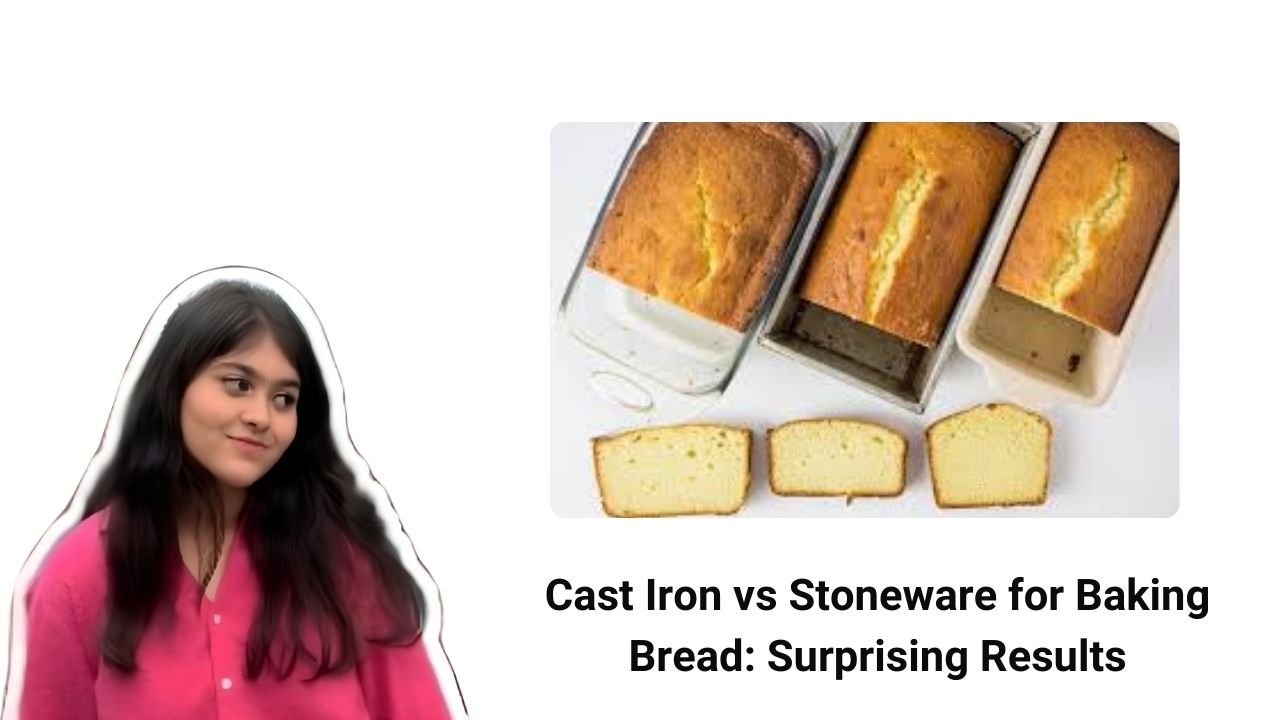There’s something magical about baking your own bread. The smell that fills your kitchen, the warmth of fresh crust in your hands, and the pride of slicing into a loaf you made from scratch—it’s like therapy. But if you’ve ever dived into the rabbit hole of baking tools, you’ve probably hit the age-old debate: Cast Iron vs Stoneware for Baking Bread: Surprising Results. Which gives you that perfect crispy crust? Which yields a soft, airy center? You might be shocked at how much your bakeware choice affects your final loaf.
I remember my first time using a cast iron Dutch oven after months of baking on a stoneware tray. The result? Let’s just say my bread looked like it came straight from an artisan bakery. But was it better than stoneware? Well, that’s where things get interesting. Each material has its charm, and if you’re serious about bread baking—especially sourdough lovers—you’ll want to understand the real differences.
Let’s break it down, loaf by loaf.
Why the Right Bakeware Matters More Than You Think
Bread baking isn’t just about flour, water, and yeast. The way heat surrounds your dough, the moisture it holds, and even the surface it touches all change the final texture and flavor. It’s like comparing a grilled steak to one cooked in a pan. Same meat, very different outcomes.
When you’re baking bread, especially rustic loaves or sourdough, you’re chasing three main goals:
- A tall oven spring (that satisfying rise)
- A crisp, golden crust
- A light, airy crumb
This is where the cast iron vs stoneware for baking bread battle begins. Both help you reach these goals in different ways, but they do it with different strengths.
So, which is best? The answer might surprise you.
Cast Iron: The Bold Performer in Bread Baking

Using cast iron feels like tapping into ancient baking secrets. It’s heavy, durable, and holds heat like a champ. When I started using a Dutch oven for my sourdough, I couldn’t believe the transformation. The rise. The crust. The sheer drama of it!
Let’s explore what makes cast iron so powerful:
1. Excellent Heat Retention & Distribution
Cast iron heats evenly and stays hot, which means your dough rises quickly and bakes uniformly. Once preheated, it acts like a mini bread oven, holding in that high temp and radiating it around the loaf. That stable heat is key to developing a rich, golden crust and a fully baked interior.
Think of it like a sauna for your dough—hot, steady, and unforgiving in all the right ways.
2. Incredible Oven Spring
The moment your dough hits that sizzling-hot cast iron, the outside begins to set, while the inside pushes upward. This dramatic lift is called oven spring—and cast iron nails it. I’ve had loaves go from a pancake shape to bakery-level boule just from the intense heat in those first 10 minutes.
You just can’t get that same power with most baking stones.
3. Traps Steam Beautifully
If you’re using a Dutch oven, you get a bonus: steam trapping. When bread bakes in a sealed, preheated cast iron pot, it traps moisture from the dough, creating a humid environment that keeps the crust from hardening too early.
This steam helps the bread expand before the crust sets, leading to a tender, moist crumb and a super crispy crust when the lid comes off.
4. Durability for Generations
Let’s be real. Cast iron lasts forever. Your grandmother’s skillet? Still going strong. A well-seasoned Dutch oven doesn’t just survive—it gets better with age. It’s an investment in years of perfect bakes.
The Downsides?
It’s heavy. And it takes time to preheat. But that’s a small price to pay for bread that makes your neighbors jealous.
Stoneware: The Quiet Artisan’s Secret Weapon

Now, let’s switch gears. Stoneware may not have the same drama as cast iron, but it’s a favorite for many home bakers—and for good reason. It brings a different kind of magic to the table.
I baked with a stoneware baking cloche for over a year, and the results? Subtle, airy, and surprisingly delightful. Stoneware feels like an old soul—gentle, earthy, and deeply connected to tradition.
1. Natural Moisture Retention
Stoneware is porous, meaning it holds onto a little moisture during the baking process. This helps keep the inside of your loaf soft and fluffy. If you’re after that open, airy crumb—the kind that makes a sourdough sandwich feel like a cloud—stoneware might be your best friend.
2. Even, Gentle Heating
Unlike cast iron’s intense heat, stoneware heats up more gradually. That means it’s less likely to scorch your crust and more likely to give you a soft, balanced bake throughout the loaf.
For softer crusts or enriched breads (like challah or brioche), this slow heat is a plus.
3. Still Delivers a Crispy Crust
Yes, despite its gentler nature, stoneware still gives a crispy crust—especially where the bread touches the hot surface. I’ve pulled out baguettes from a stoneware tray with golden, crackling bases that sing when you squeeze them.
4. More Affordable, But Fragile
Stoneware tends to be cheaper than cast iron, which is great if you’re just starting out. But it’s also more delicate. Drop it once, and you might be in the market for a new one. And unlike cast iron, it doesn’t improve with time.
Side-by-Side Comparison Table
Here’s a quick glance at how cast iron vs stoneware for baking bread stack up:
| Feature | Cast Iron | Stoneware |
| Heat Retention | Excellent – holds heat intensely | Good – gentle, even heat |
| Oven Spring | Strong – creates tall, rounded loaves | Moderate – less dramatic lift |
| Crust Texture | Crispy & Robust | Crispy (at base) – but lighter overall |
| Crumb Texture | Moist & Tight | Light & Airy |
| Moisture Retention | High (with lid) | Natural porous retention |
| Durability | Extremely durable | More fragile |
| Cost | More expensive | More affordable |
| Preheat Time | Longer | Shorter |
Baking Stone vs Cast Iron: Which Is More Versatile?

Here’s the kicker: cast iron isn’t just for sourdough. While it shines for crusty boules, you can also use it for focaccia, pizza, even cinnamon rolls. The Dutch oven effect—with its steam and heat combo—is unmatched.
Stoneware shines for gentler bakes or when you want a naturally lighter loaf. If you bake often and love a soft crumb with a whisper of crunch, it’s a reliable choice.
Still wondering which to choose? It comes down to how you like your bread:
- Want tall, crispy artisan loaves? Go cast iron.
- Prefer soft, airy bread with a light crust? Try stoneware.
Either way, your bread will improve just by choosing the right tool for your goal.
Bullet Breakdown: Cast Iron Pros and Cons
Pros:
- Unbeatable heat retention
- Strong oven spring
- Excellent for steam trapping
- Durable and long-lasting
Cons:
- Heavy and bulky
- Takes longer to preheat
- Pricier upfront
Bullet Breakdown: Stoneware Pros and Cons
Pros:
- Affordable
- Retains moisture for soft crumb
- Heats evenly
- Great for lighter loaves
Cons:
- Fragile
- Less oven spring
- Doesn’t trap steam unless covered
Baking Bread in Both: Surprising Results from Real Tests
I once ran a back-to-back experiment—same dough, same rise time, same oven temp. One loaf went into a blazing hot cast iron Dutch oven, the other on a stoneware baking stone. You’d think the difference would be small, right? Nope. It was night and day.
The cast iron loaf leapt up with confidence—taller, rounder, prouder. Its crust? Deep golden brown with a thick, rustic crackle. Meanwhile, the stoneware loaf was calmer, more delicate. Its shape held, but the oven spring wasn’t as dramatic. The crust? Thin and crisp, almost like biting into a cracker. The crumb, though—wow. It was light, open, almost cloud-like. Each had its charm. But the differences were far more noticeable than I expected.
Here’s what stood out most:
- Oven Spring: Cast iron loaf was significantly taller.
- Crumb Texture: Stoneware loaf had more open holes and was lighter inside.
- Crust: Cast iron gave a thick, bold crust. Stoneware’s was more refined and delicate.
- Flavor: Nearly identical—what changed was feel and form.
So yes, both delivered good bread. But they told different stories.
Sourdough-Specific Insights: Cloche vs Dutch Oven
If you’re into sourdough (and who isn’t these days?), your choice of baking tool makes a big impact. Many folks swear by the best baking stone for sourdough bread, especially when paired with a dome-shaped cloche. The reason? It mimics a traditional bread oven by trapping steam and providing a hot baking surface.
But the Dutch oven method with cast iron still wins in versatility and crust development. Especially if you like those blistered, crunchy crusts with a dramatic score bloom.
Let’s compare:
| Tool | Best For | Steam Effectiveness | Final Look |
| Cast Iron Dutch Oven | Bold sourdoughs, crusty boules | Excellent | Tall, cracked crust |
| Stoneware Cloche | Airy loaves, subtle texture | Moderate | Light, rounded look |
Sourdough baking stone vs Dutch oven comes down to steam and heat. Dutch ovens trap steam more effectively, especially in the first 15 minutes of baking. That means better oven spring and a stronger crust.
Baking Stone vs Steel for Bread: Where Do They Fit In?
While we’re comparing, you might be wondering where baking steels come in. Many bakers rave about them as the best baking stone substitute for bread, especially for pizzas or flatbreads.
Baking steel gets hotter faster than stone and holds that heat longer. If you’re looking for something between cast iron and stoneware, steel might be your sweet spot. It doesn’t retain moisture like stoneware but gives amazing bottom crusts.
Quick comparison:
- Stoneware: Great for soft, airy loaves
- Cast Iron: Best for robust artisan-style bread
- Steel: Perfect for crisp bottom crusts and pizza-like textures
Which One Should You Choose? Let Your Bread Style Decide
Picking between cast iron vs stoneware for baking bread really comes down to personality—your bread personality, that is.
Choose Cast Iron if You:
- Love dramatic oven spring and crackling crusts
- Bake crusty boules or rustic sourdough regularly
- Prefer a no-fuss, steam-trapping solution
- Want a lifetime investment in a heavy-duty tool
Choose Stoneware if You:
- Prefer lighter, fluffier breads
- Bake softer loaves or enriched doughs
- Enjoy gentler heat distribution
- Want a more budget-friendly option (but handle with care!)
Not sure yet? Start with stoneware—it’s more forgiving. Then, as your skills grow, level up with cast iron for next-level crusts and impressive spring.
A Word About Size: Large Baking Stone for Bread
If you’re baking for a crowd or just love bigger loaves, a large baking stone for bread is a game-changer. It lets you bake multiple loaves at once, and the added surface area holds heat well. Just be sure your oven can handle the size.
But remember—larger doesn’t always mean better. In smaller home ovens, a smaller cast iron Dutch oven may give you better results due to controlled heat and steam.
Caring for Your Tools: A Quick Guide
Cast Iron Tips:
- Always preheat before use
- Dry thoroughly after washing to prevent rust
- Oil occasionally to keep it seasoned
- Avoid soap—hot water and a brush work best
Stoneware Tips:
- No need to season, but avoid soap
- Let cool before washing to avoid thermal shock
- Never soak it in water—too porous
- Use parchment paper to avoid sticking (especially for wet doughs)
Take care of them, and both can serve you for years.
Final Thoughts: Embrace the Surprises
What surprised me most when comparing cast iron vs stoneware for baking bread wasn’t just the difference in crust or crumb. It was how each tool felt during the process. With cast iron, I felt like a blacksmith—bold, intense, focused. With stoneware, I felt like a potter—calm, precise, artistic.
Each has its place in your kitchen. And each can create incredible bread—just in different ways.
If you’re chasing perfection, try both. You’ll learn something new with each bake. Maybe even surprise yourself, just like I did.
Wrap-Up Table: Quick Recap
| Feature | Cast Iron | Stoneware |
| Crust | Thick, crunchy, bold | Thin, crisp, gentle |
| Crumb | Moist, denser | Light, airy |
| Steam Trapping | Excellent with Dutch oven | Moderate (if covered) |
| Ease of Use | Heavier, longer preheat | Lightweight, faster heat |
| Price | Higher, long-lasting | Lower, but fragile |
| Best Use | Artisan sourdough, rustic loaves | Soft breads, gentle bakes |
Baking Bread Is an Adventure—Enjoy the Ride
The best part of baking bread? It’s always evolving. You’re not just feeding yourself—you’re connecting to a timeless ritual, experimenting with science and art, and learning with every loaf.
So whether you’re wielding a cast iron Dutch oven or sliding your dough onto a stoneware baking stone, you’re doing it right. The only “wrong” way is not baking at all.
Bake boldly. Experiment freely. And let your bread surprise you.

Hey, I’m Nandoza Ahammad, passionate food enthusiast and creator of narzcookingcave.com, shares delicious recipes and cooking tips worldwide.

